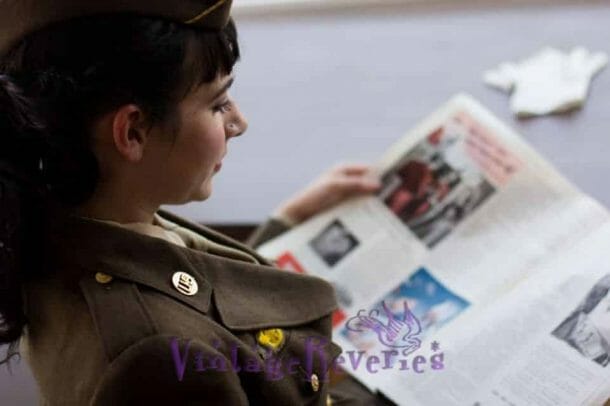
Illustrated Miscellany: 1892 Hat Fashions, Victorian Embroidery, Dressmaking at Home, and other household crafts

Wow! These 10 pages of fashions for January 1892 from The Delineator magazine are a truly fascinating and detailed glimpse into Victorian illustrated miscellany. These pages provide us with a snapshot of life, style, and domestic craft in the early 1890s, a time when fashion and household design were steeped in both intricate artistry and strict societal expectations. This edition showcases the latest hat fashions of the early 1890s, offers an insightful discussion on decorative bows, includes a delicate illustration of a walking skirt and yoked waist, and features a comprehensive article on dressmaking at home. For those who appreciate history, fashion, and the fine arts of homemaking, these pages are truly invaluable.
Victorian Hat Fashions and Accessories
In 1892, millinery (hat-making) was an essential aspect of women’s fashion, as hats were not merely functional but served as critical markers of social status and personal taste. The pages from The Delineator detail the latest trends in hats for the early 1890s. Women’s headwear of this time was extravagant, often adorned with delicate bows, feathers, ribbons, artificial flowers, and even small arrangements of lace. The magazine delves into descriptions and stylistic advice on various types of decorative bows, which were used not just for hats but also for dresses, umbrellas, and hair accessories.
Skirts and Waists: Silhouettes of the 1890s
The illustrations in this collection bring to life the iconic feminine silhouettes that characterized this period. One depiction features a walking skirt coupled with a yoked waist – an early 1890s style that hints at the softer transition from the exaggerated bustle of the 1880s to the smooth, bell-shaped skirts of the later 1890s. At the time, skirts designed for walking were practical yet elegant, often made from sturdy but refined fabrics such as wool blends or heavier silks. Yoke-waist designs were particularly popular as they allowed for modesty and comfort while maintaining a fashionable shape.
The article on dressmaking at home provides detailed guidance on achieving these looks. It discusses the fabrics, trimmings, and construction techniques used for popular designs, including the fashionable bell skirt, umbrella skirt, and the fan-back skirt. These styles emphasized a graceful and balanced silhouette, with the skirts flaring from a tightly corseted waistline into sumptuous folds of fabric that swayed elegantly with movement.
Home Dressmaking: A Domestic Art
Dressmaking was a common skill for Victorian women, especially those who could not afford to purchase custom-made gowns from an atelier or dressmaker. Magazines like The Delineator provided detailed instructions and patterns, empowering women to sew their own fashionable clothing at home. The comprehensive article in this issue describes methods for creating elaborate skirts, such as the fan-back design, which featured delicate pleats and draped layers. It also discusses trimmings, like lace and velvet ribbons, that could be used to add personality and flair to the garments.
Additionally, the article touches on how the dress styles of 1892 were influenced by the broader social movements of the time. The increasing popularity of activities like cycling led to more practical yet fashionable garments, such as shorter skirts and looser waists, paving the way for greater mobility compared to the restrictive fashions of earlier decades.
Other Victorian Crafts: Embroidery, Decorative Arts, and Household Touches
This edition doesn’t limit its focus to fashion alone. It also highlights a variety of household crafts and decorative arts that were central to Victorian homemaking. A cross-stitch embroidery design for a miss’s apron adds a delightful touch, offering insights into the types of handmade items that were used both practically and decoratively in Victorian households.
Another charming feature is the section on Victorian interior decorations. Here, the magazine describes how to make unique items like a “scrap basket,” intricately embroidered table coverings, drapes, sofa pillows, and even a fancy muff. These crafts represented skill, creativity, and the ability to beautify the domestic space, which was a key role for women during this era.
Men’s Fashion: Refinement for the Victorian Gentleman
The fashion focus extends to men’s clothing, offering a fascinating look into early 1890s trends for Victorian gentlemen. Featured illustrations include puff scarves (the precursor to modern ties), braces or suspenders (practical yet elegantly designed), and the Joinville – a type of formal cravat tied in an intricate knot. The inclusion of men’s fashions adds further depth to this issue of The Delineator and reflects the Victorian era’s emphasis on propriety and appearance for both sexes.
Time Capsule of an Era
As a whole, these pages from The Delineator act as a time capsule of the fashion and domestic arts of 1892. They reflect a society that placed great value on appearance, elegance, and attention to detail—whether in personal attire, home decor, or practical crafts. This period marked a unique intersection of industrial progress and artistic craftsmanship, where women were embracing modern conveniences (such as sewing machines and ready-made patterns) while still adhering to traditional ideals of beauty and propriety.
The Victorian age was also a time of transformation. The advancements in technology, along with the gradual shift toward greater freedom and practicality in women’s clothing, hinted at the cultural and social changes on the horizon. Looking back at these magazine pages allows us to appreciate the artistry, creativity, and complexity of life in a bygone time while offering inspiration for modern-day enthusiasts of vintage style and design.
For anyone passionate about history, textiles, or the art of handmade fashion, these scans from The Delineator are nothing short of a treasure trove. Through these pages, we can not only admire the artistry of the fashions but also gain a deeper understanding of the cultural context that shaped them.
So immerse yourself in the world of 1892 through these vivid and detailed pages, which offer a rare glimpse into the artistry and elegance that defined the Victorian era. From hats adorned with bows and feathers to the intricacies of home dressmaking and elaborate embroidery, each detail tells the story of a time when beauty and craftsmanship were paramount.
Explore this unique miscellany of fashion and crafts, and take your imagination on a journey back to the elegant and industrious days of the Victorians.



























You must be logged in to post a comment.